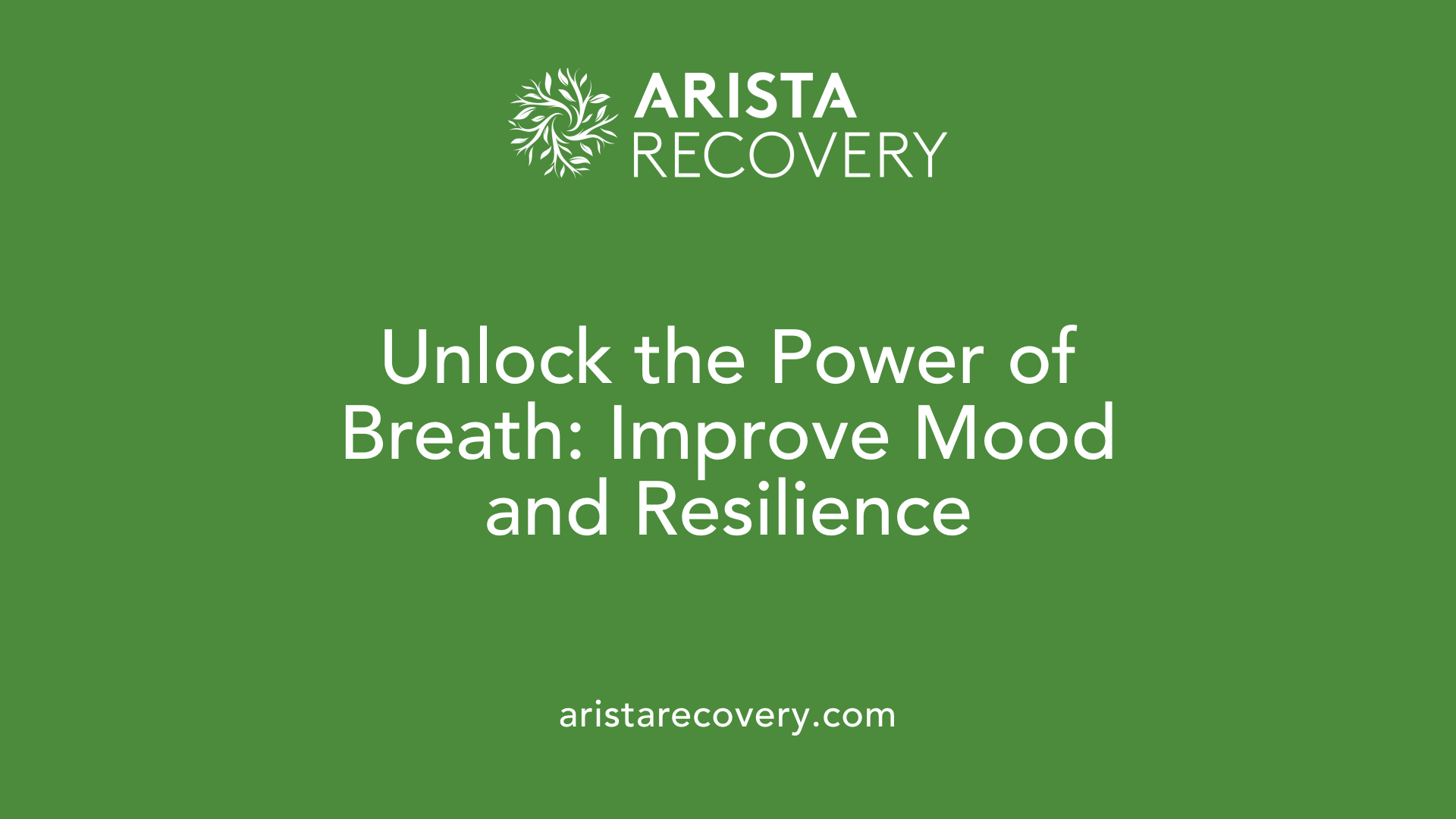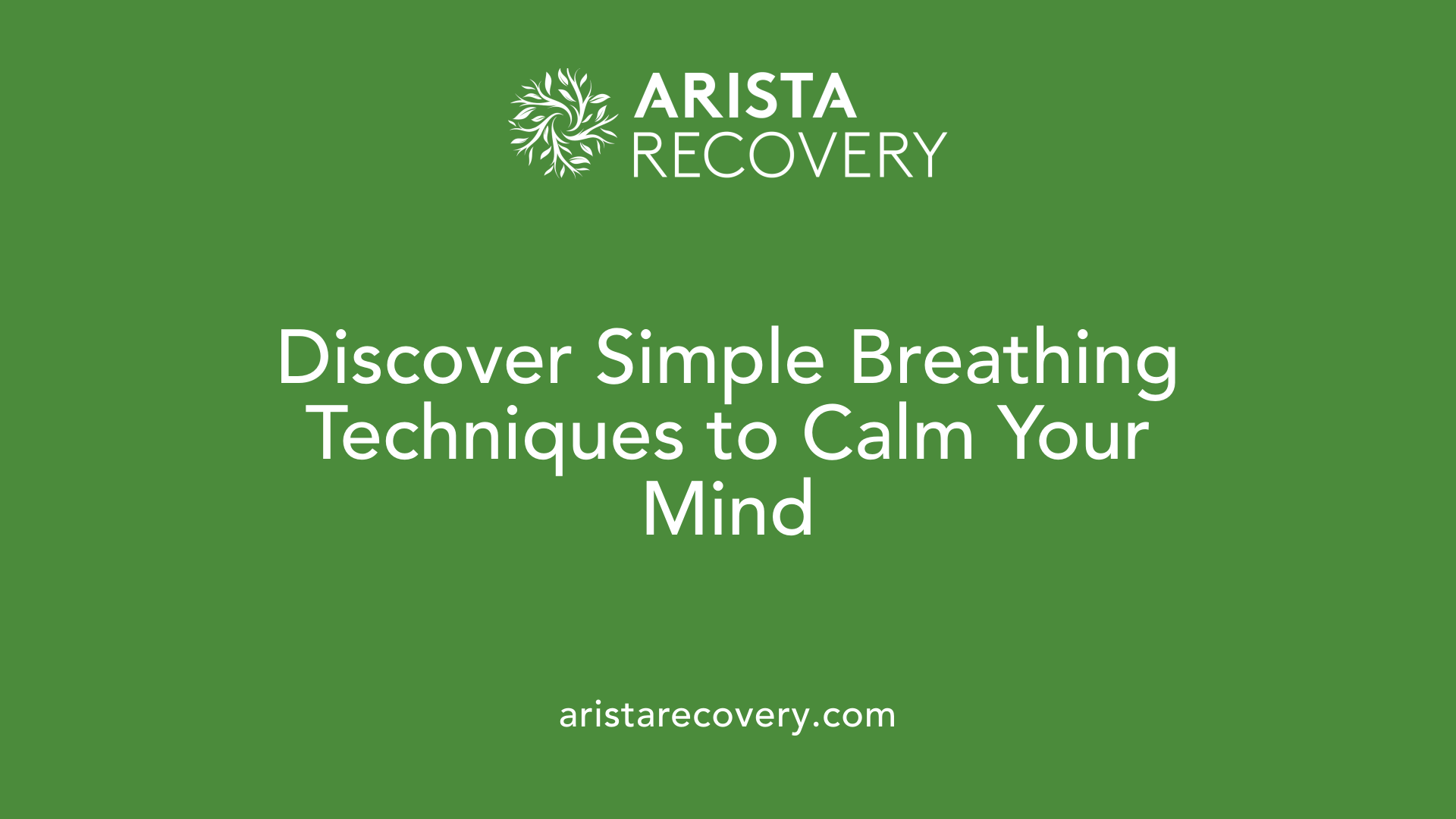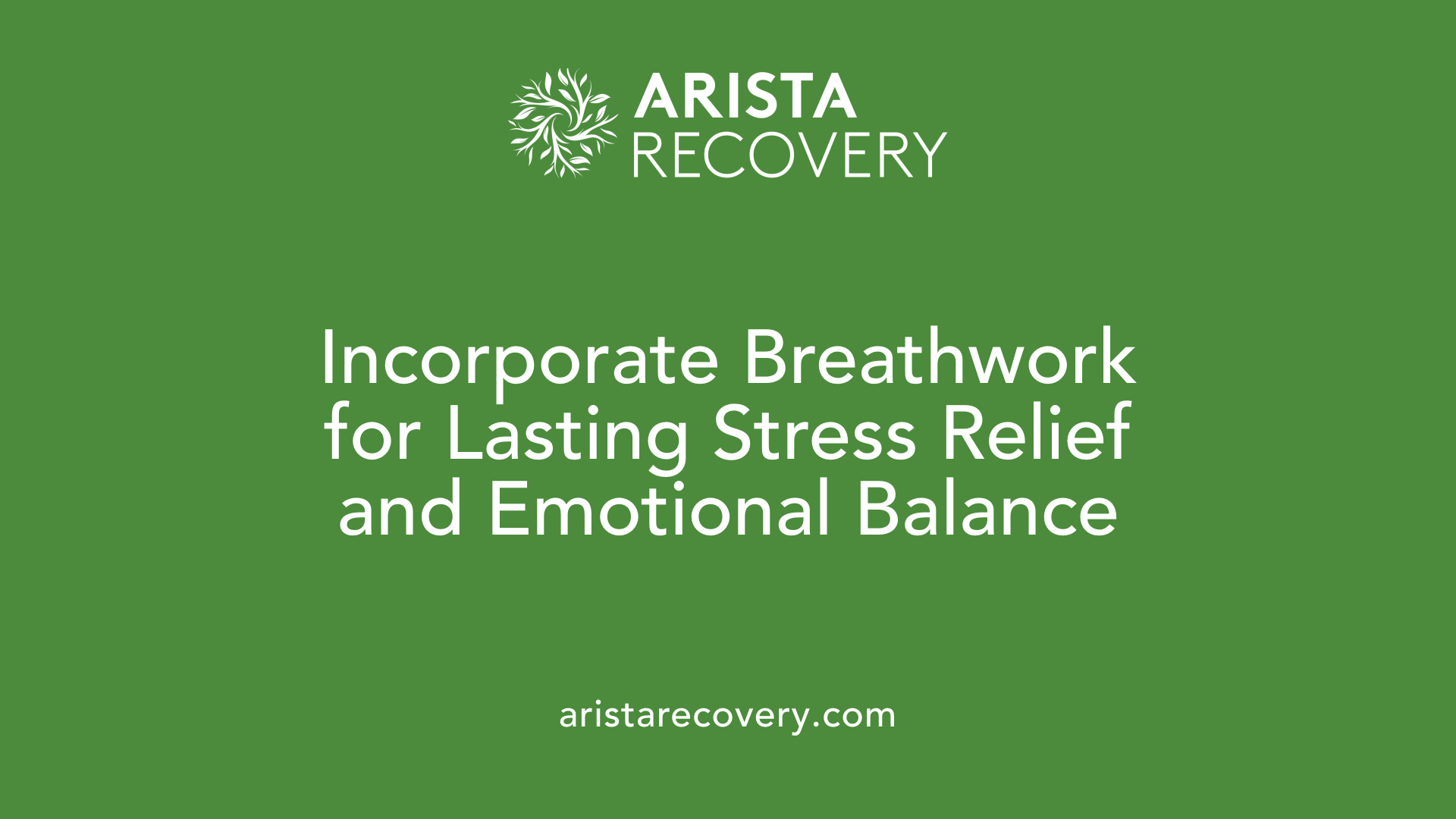The Role of Breathwork in Managing Anxiety and Stress

Understanding the Power of Breath in Stress Management
In recent years, scientific research has increasingly highlighted the importance of controlled breathing in managing anxiety and stress. Breathwork, the deliberate practice of specific breathing techniques, offers a simple yet powerful tool to promote mental, emotional, and physical well-being. This article explores how breathwork impacts mental health, the physiological mechanisms involved, effective practices to incorporate into daily routines, and the scientific evidence supporting their use.
Physiological Impact of Breathwork on Mental Health

What are the physiological effects of breathwork on mental health?
Breathwork significantly influences physical processes that underpin mental health by engaging the body’s autonomic nervous system. This system controls involuntary functions like heart rate, blood pressure, and digestion. Slow, deliberate breathing techniques—such as diaphragmatic breathing, cyclic sighing, and respiratory biofeedback—activate the parasympathetic branch, often called the 'rest and digest' system.
One primary effect is an increase in heart rate variability (HRV) and vagal tone. High HRV indicates a flexible autonomic nervous system capable of adapting to stress, which helps reduce feelings of anxiety and improve mood. Moreover, regulating breathing diminishes levels of cortisol, a stress hormone associated with anxiety and depression, contributing to overall mental resilience.
These practices support brain functions involved in emotional regulation, fostering neural synchronization for improved mood stability. They also enhance interoception, the ability to sense internal body states, which is linked to emotional awareness and control. Such physiological responses lead to decreases in symptoms of anxiety and depression, providing measurable benefits across various populations.
Importantly, breathwork can be performed safely and conveniently, often as part of daily routines or therapeutic interventions. Its ability to effect physical change with minimal risk makes it a promising tool to support mental health in both clinical and non-clinical settings.
How do breathing techniques influence mood and physiological arousal?
Breathing exercises shape mood and physical states by directly modulating the autonomic nervous system's balance. By emphasizing slow, deep inhalations and extended exhalations, these techniques stimulate the vagus nerve, which promotes parasympathetic activation.
This activation results in increased heart rate variability, which correlates with greater emotional resilience. As the vagus nerve signals relaxation, physiological arousal diminishes—heart rate and blood pressure decrease, respiratory rate slows, and muscle tension relaxes.
Such regulation reduces feelings of anxiety, tension, and agitation, fostering calm and well-being. Regular practice enhances these effects, helping individuals better manage emotional responses, reduce symptoms of stress and depression, and achieve a more balanced state of mind.
Overall, controlled breathing offers a simple yet powerful means of influencing both mood and physiological arousal, making it an accessible strategy for mental health improvement.
Practical Breathwork Techniques for Stress and Anxiety Relief

What are some effective breathing practices for stress and anxiety reduction?
Effective breathing practices for reducing stress and anxiety primarily involve slow, deep, and controlled breathing patterns that activate the body's relaxation response. One of the most well-known methods is diaphragmatic or belly breathing, which encourages engagement of the diaphragm to promote relaxation. By focusing on deep inhalations through the nose and slow exhalations through the mouth, individuals stimulate the parasympathetic nervous system, leading to decreased heart rate and blood pressure.
Techniques such as 4-7-8 breathing, where you inhale for four seconds, hold for seven seconds, and exhale for eight seconds, are particularly effective at calming the nervous system. Similarly, box breathing involves inhaling, holding, exhaling, and holding again for equal counts, providing a rhythmic pattern that fosters relaxation. Yogic practices, like alternate nostril breathing, help balance emotions and reduce anxiety by regulating the autonomic nervous system. Longer, paced exhalations—extending the length of the exhale beyond the inhale—are also known to promote relaxation.
These exercises are accessible and can be performed in multiple positions—sitting, lying down, or standing—and only take a few minutes per session. When practiced regularly, these techniques can significantly improve stress management and overall well-being, especially when incorporated into daily routines.
Scientific Evidence Supporting Breathwork for Stress and Anxiety

Is there scientific evidence supporting breathwork for stress and anxiety?
Yes, there is strong scientific backing for using breathwork as an effective method to reduce stress and anxiety. Multiple rigorous studies, including meta-analyses of randomized-controlled trials, have provided compelling evidence that controlled breathing techniques can lead to meaningful emotional and physical health benefits.
A comprehensive meta-analysis examined 12 randomized-controlled trials involving 785 participants. The findings showed that breathwork significantly lowered self-reported measures of stress, anxiety, and depression. Specifically, the effect sizes ranged from -0.32 to -0.40, indicating small to medium improvements, with p-values well below the threshold for statistical significance (p = 0.0009 for stress, p < 0.0001 for anxiety and depression). This level of research points to breathwork's credibility as a scientifically validated intervention.
Physiological studies complement these findings, illustrating how specific breathing practices influence body systems. Techniques like cyclic sighing and diaphragmatic breathing can reduce respiratory rate, decrease stress hormones, and enhance mood. These physiological changes contribute to a calming effect that can last from minutes to months, depending on the duration and frequency of practice.
The temporal aspect of effectiveness has been explored as well. Sessions lasting at least five minutes, especially those involving human-guided training and multiple sessions over time, have demonstrated superior outcomes. Regular practice builds resilience, with long-term benefits including improved autonomic nervous system regulation, increased heart rate variability, and better emotional regulation.
Different populations benefit from breathwork, including clinically diagnosed anxiety sufferers, high-stress groups, and even youth populations. Interventions tailored with core components such as longer durations, guided training, and consistent practice tend to yield the best results. Groups with high anxiety or stress levels benefit markedly, and small but consistent improvements are observed among general populations.
Immediate effects of these practices are also notable. Techniques like diaphragmatic breathing, box breathing, and the physiological sigh can rapidly reduce physiological arousal — lowering heart rate, blood pressure, and respiratory rate, while promoting feelings of calm.
In summary, comprehensive research spanning physiological measures and self-report questionnaires supports the use of breathwork as a credible and effective tool for managing stress and anxiety. Its versatility, ease of practice, and durability of benefits establish breathwork as a valuable element in mental health care.
| Study Type | Effect Size | Focus Area | Key Findings |
|---|---|---|---|
| Meta-Analysis | -0.35 | Stress, Anxiety, Depression | Significant reductions in self-reported symptoms |
| Physiological Studies | Variable | Cardiac and respiratory measures | Reduced heart rate, improved mood |
| Clinical Trials | Variable | Anxiety disorders, high stress | Improvement with diaphragmatic, slow, and biofeedback techniques |
| Follow-up Studies | Maintained benefits 2-12 months | Long-term effects on autonomic regulation | Sustained improvements in stress resilience |
This body of evidence underscores that breathwork is not merely a relaxing ritual but a scientifically supported intervention with measurable benefits for mental health.
Long-Term Benefits and Integration of Breathwork into Stress Management Strategies

What are the benefits of incorporating breathwork into stress management routines?
Including breathwork in daily stress management offers a variety of lasting mental and physical health advantages. Regular practice not only promotes immediate relaxation and emotional regulation but also contributes to improved sleep quality and overall resilience against stressors.
Scientific studies underscore the effectiveness of breath control techniques—such as diaphragmatic breathing, slow-paced exercises, and yogic pranayama—in activating the parasympathetic nervous system. This activation leads to tangible physiological changes like reduced heart rate, lower blood pressure, and decreased levels of stress hormones. An essential measure of autonomic nervous system health—heart rate variability—improves with continued breathing practice, signaling better emotional stability and psycho-physiological balance.
Breathwork techniques often involve slow, deep inhalations and extended exhalations that influence brain activity and stimulate the vagus nerve, a pathway integral to calming the body and mind. For instance, practices like box breathing and 4-7-8 breathing have been shown to prompt the relaxation response, reducing feelings of anxiety and depression.
This form of therapy is particularly accessible and safe, making it suitable for a wide range of populations and settings, including workplaces, schools, and clinical environments. It also empowers individuals with a simple, scalable tool for managing stress independently.
Building resilience through consistent practice
The longevity of breathwork benefits hinges significantly on consistency. Engaging in daily or multiple sessions over several weeks builds resilience to stress, equipping individuals to handle emotional and physical challenges more effectively.
Long-term training not only fosters improvements in mental health—reducing symptoms of anxiety and depression—but also enhances physical well-being. Chronic stress often triggers inflammation and cardiovascular strain; regular breathwork mitigates these risks by strengthening autonomic nervous system regulation.
Adopting a routine—such as practicing for at least 5 minutes daily—helps establish neural pathways that respond more efficiently to stress, diminishing overreactions and promoting sustained calmness. As a result, individuals tend to report better mood, increased energy, and overall emotional stability.
Role of guided training and multiple sessions
Scientific evidence highlights that guided breathwork practices—facilitated by trained instructors—amplify the benefits. Human-guided training provides personalized feedback and helps correct technique, maximizing physiological and psychological gains.
Most effective interventions incorporate multiple sessions, often over weeks or months. These repeated practices not only reinforce skills but also help in developing a habitual response to stress. Studies underscore that interventions involving guided, long-term practice consistently outperform single-session approaches.
Additionally, the presence of a facilitator or group setting can foster accountability, motivation, and shared learning, making sustained commitment more feasible.
Effects of sessions ≥5 minutes
Research indicates that sessions lasting at least 5 minutes are generally more effective in producing measurable improvements in stress and anxiety reduction. Shorter sessions, while sometimes beneficial in acute situations, may lack the depth required to induce significant physiological changes.
Longer, structured sessions allow for deeper relaxation, better regulation of breathing patterns, and more profound activation of the parasympathetic nervous system. Protocols exceeding 5 minutes are associated with significant decreases in blood pressure, heart rate, and respiratory rate, alongside reductions in perceived stress levels.
Practicing longer sessions consistently helps cultivate neural and autonomic adaptations that support long-term mental health benefits.
Supplementing other treatments
Breathwork is most effective when integrated with other mental health interventions, such as psychotherapy, mindfulness, or medication. It provides complementary benefits by directly influencing physiological processes that underpin emotional states.
For example, combining guided breathing exercises with cognitive-behavioral therapy can enhance emotional regulation, while integrating breath practices into mindfulness routines can deepen awareness and acceptance.
In clinical populations—such as individuals with anxiety, depression, or post-traumatic stress disorder—breathwork can serve as an adjunct, alleviating symptoms and improving overall treatment outcomes.
Moreover, the simplicity and safety profile of breath practices make them an accessible tool for diverse ages and conditions, supporting holistic health strategies.
| Aspect | Description | Additional Notes |
|---|---|---|
| Long-term improvements | Reduces anxiety, depression, and stress hormone levels | Sustained practice enhances resilience |
| Building resilience | Daily or regular long-term practice | Neural pathways strengthen, stress response diminishes |
| Guided training | Facilitated by trained professionals | Maximizes technique accuracy and engagement |
| Session duration | ≥5 minutes | More effective in inducing relaxation |
| Combining treatments | Integrates with therapy or medication | Provides comprehensive stress and mental health management |
Harnessing the Breath: A Pathway to Mental Clarity and Calm
The scientific and clinical evidence affirms that breathwork plays a crucial role in managing anxiety and stress. By engaging in intentional, mindful breathing practices, individuals can influence their autonomic nervous system, promote physiological calm, and enhance emotional regulation. Techniques such as diaphragmatic breathing, box breathing, and the physiological sigh are simple yet highly effective tools that can be incorporated into daily routines to foster resilience and overall well-being. As research continues to explore this ancient yet scientifically validated approach, integrating breathwork into mental health strategies offers a promising, accessible, and empowering way to cultivate calm amidst the chaos of modern life.
References
- Breathing to reduce stress | Better Health Channel
- Effect of breathwork on stress and mental health: A meta-analysis of ...
- Breathing Practices for Stress and Anxiety Reduction
- Breathwork Interventions for Adults with Clinically Diagnosed ...
- Breathing exercises for stress - NHS
- Breath control helps quell errant stress response - Harvard Health
- How breathing can reduce stress and anxiety
- Brief structured respiration practices enhance mood and reduce ...
You’re not alone in this.
When mental health challenges and addiction intersect, it can feel isolating. At Arista, we offer compassionate, evidence-based, and trauma-informed care to help you heal, grow, and move forward.
You’re not alone in this.
When mental health challenges and addiction intersect, it can feel isolating. At Arista, we offer compassionate, evidence-based, and trauma-informed care to help you heal, grow, and move forward.
Support that moves with you.
You’ve taken a brave first step. At Arista Recovery, we’re here to help you continue with best-in-class care designed for long-term healing and support.
.webp)






